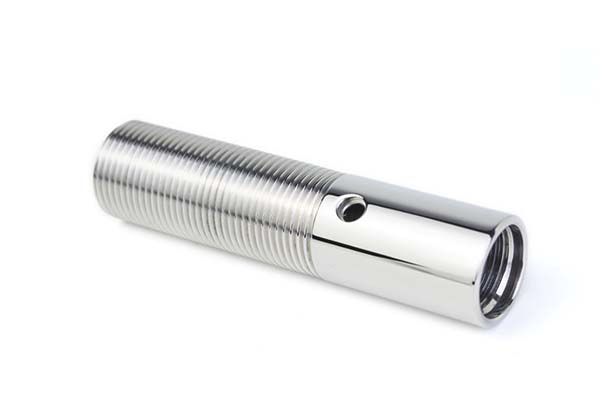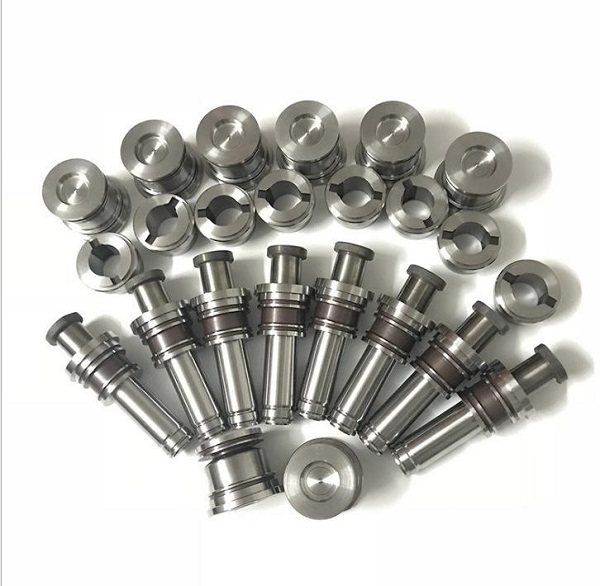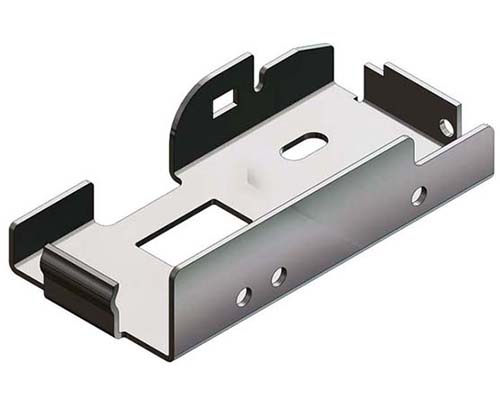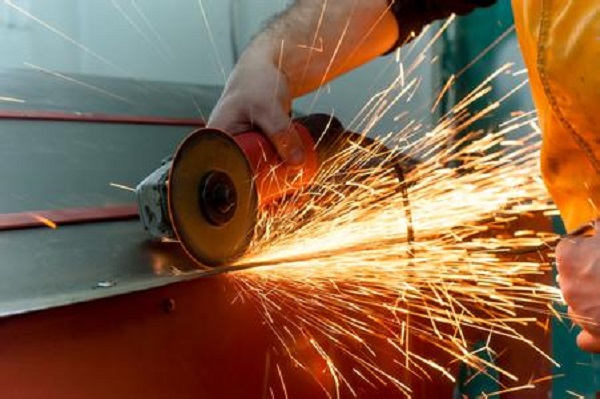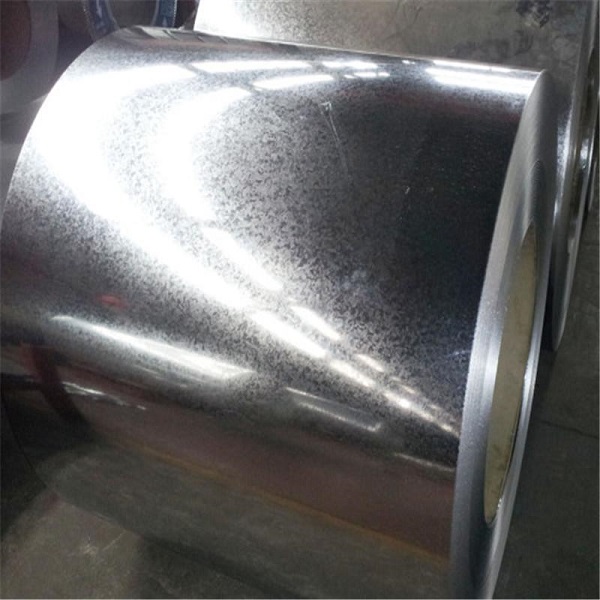1. Basic cognition of machined bars: from definition to core parameters
As the "basic component" of industrial manufacturing, machined bar refers to solid metal bar that is formed through rolling, forging, drawing and other processes, and then machined to meet specific size and performance requirements. Many engineers who are new to it will confuse "bar" and "tube", the core difference is that the former is a solid structure, the latter is hollow, and the processing accuracy of the bar directly determines the reliability of the end product.
The essence of bar machining principle is to remove excess parts of material through cutting, grinding, stamping, etc., while ensuring dimensional accuracy and surface quality. Common machining basic processes include turning, milling, and drilling, where turning is used for shaft parts machining, milling is suitable for flat surfaces or complex contours, and drilling is for hole machining.
In the bar classification standard, it can be divided into metal and non-metallic bars according to the material (mainly metals in industry), and can be divided into hot-rolled, cold-rolled and cold-drawn bars according to the processing method. The specification parameters of the bar mainly focus on the diameter (common range 6mm-500mm), length (1m-6m can be customized) and cross-sectional shape (round, square, hexagonal, etc.). For example, titanium alloy rods commonly used in the aerospace field need to have a diameter tolerance of within ±0.02mm to meet the assembly requirements of engine components.
Material properties and selection are the key to the basic link, which needs to be combined with the use environment: high-temperature resistant alloys are preferred for high-temperature scenarios, stainless steel is preferred for corrosive environments, and copper alloys are preferred for conductive needs. Here is a practical case: an electronic equipment manufacturer once misused ordinary carbon steel rods to cause connector heating, and after replacing the chrome-zirconium copper material (conductivity > 75% IACS, softening point ≥ 475°C), the problem was completely solved.
2. Material science revealed: performance differences and application scenarios of different materials
The performance of machined bars is determined by the material, and here is a detailed comparison of the three mainstream materials:
| Material type | Representative materials | Core performance metrics | Typical applications: |
| Stainless steel bar | 304/316L stainless steel | Corrosion resistance ≥ 95%, tensile strength 480-620MPa | Chemical equipment, food machinery |
| Chromium zirconium copper material | C18150 Chromium Zirconium Copper | Conductivity 75-83% IACS, hardness HRB70-86 | Electronic connectors, soldering electrodes |
| High-strength alloy steel | Ti-6Al-4V titanium alloy | Tensile strength 900-1400MPa, density 4.5g/cm³ | Aero engine blades, landing gear |
In the mechanical properties of materials, the balance between tensile strength, hardness and toughness is the key to selection. For example, TA15 titanium alloy rods have a tensile strength of 986MPa and an elongation of 13.5% after being annealed at 820°C, achieving a perfect match between strength and plasticity. The heat treatment state directly affects the performance: solution treatment can improve strength, annealing treatment can optimize toughness, and aging treatment can take into account both.
From the perspective of material microstructure, the austenitic structure of stainless steel gives it excellent corrosion resistance, the fine grain structure of chromium-zirconium copper ensures high conductivity, and the α+β duplex structure of titanium alloy achieves the unity of lightweight and high strength. During actual selection, it is necessary to confirm whether the microstructure meets the requirements through metallographic structure inspection to avoid processing cracking due to grain coarseness.
3. Analysis of manufacturing process: from raw materials to finished products
Four-roll rolling technology is the core process of bar forming, through the coordinated extrusion of four rolls, the metal billet is gradually formed into a set size, suitable for large-diameter bar production (diameter > 100mm), and the production efficiency is 30% higher than that of traditional two-roll rolling. Cold-drawn finishing achieves high-precision forming through mandrel drawing, with a tolerance of ±0.01mm, and is often used in precision scenarios such as medical devices and aerospace components.
Thermomechanical control processes (TMCP) are a key technology for improving material properties, optimizing the grain structure of materials by precisely controlling rolling temperatures, speeds, and cooling rates. For example, after TMCP treatment, the yield strength of high-strength alloy steel rods can be increased by 20%-30%, and the toughness is not significantly reduced. For hollow bar production, the perforation + rolling composite process is adopted, and the wall thickness uniformity needs to be controlled (deviation ≤ 0.5mm).
Surface treatment technology directly affects the service life of the bar: stainless steel rods are often pickled and passivated to improve corrosion resistance; The chrome-zirconium copper rod is polished to reduce the surface roughness (Ra≤0.8μm), while the titanium alloy rod is strengthened by shot peening to improve the fatigue strength. An auto parts manufacturer once ignored the surface treatment, resulting in the rust of the drive shaft rod after half a year of use, and the service life was extended to more than 3 years after the subsequent addition of galvanizing treatment.
4. Quality control: the whole process inspection in line with international standards
The dimensional tolerance standards need to refer to international standards: steel rods follow GB/T 4162-2022, large-diameter titanium alloy rods follow GB/T 40324-2021, and aluminum alloy rods follow ISO 2379:1972 standards. In actual production, the straightness requirement is usually controlled at 0.2mm per meter ≤, otherwise it will lead to excessive vibration during CNC machining and affect accuracy.
Non-destructive testing methods are the core means of quality control, and there are three commonly used methods:
- Ultrasonic flaw detection (UT): detects internal defects with sensitivity up to 0.1mm cracks;
- Eddy current testing (ET): Troubleshoot surface defects, suitable for conductive materials;
- Metallographic Structure Inspection: Analyze the microstructure and judge the heat treatment effect.
In the inspection of titanium alloy rods, an aerospace company found 0.3mm internal inclusions through ultrasonic flaw detection, and timely replacement of raw materials avoided subsequent flight risks. Surface quality assessment focuses on scratches, scales and other defects, and precision parts require no visible defects on the surface, with a roughness of Ra≤0.4μm.
5. Precision machining technology: the path to achieve micron-level accuracy
CNC Swiss lathe machining is the go-to equipment for precision bar machining, with a tolerance control capability of up to ±0.002mm, which is 5 times more accurate than ordinary CNC lathes. Combined with specialized cutting tools (e.g. PCD tools) and high-speed machining parameters (cutting speed 800-1200m/min), efficient and high-precision machining can be achieved.
Micron-level tolerance control needs to solve three major problems:
- Thermal deformation: using constant temperature workshop (temperature fluctuation ±1°C);
- Vibration interference: use anti-vibration clamps and dampers;
- Tool wear: Regularly check tool accuracy and replace it immediately if the wear exceeds 0.005mm.
Automated processing systems (such as robotic loading and unloading + in-line inspection) can further improve accuracy and stability, and after a medical device manufacturer introduced this system, the processing pass rate of surgical instrument rods increased from 92% to 99.5%.
6. Industry application cases: practical scenarios of machined bars
The aerospace sector is a representative of demanding applications: the Airbus A350 airframe is machined from Ti-6Al-4V titanium rods, which reduces weight by 12% and reduces fuel consumption by 300 tons per aircraft per year; The rocket fuel turbopump spindle is precision turned as a whole and can withstand the alternating impact of -253°C liquid hydrogen and high-temperature gas.
In the manufacture of auto parts, the engine crankshaft is made of high-strength alloy steel bars, which have a hardness of HRC28-32 after quenching and tempering to ensure a service life of one million kilometers; The electronic connector is made of C18150 chrome zirconium copper rod to meet the needs of high current transmission.
Medical device parts require high precision and biocompatibility: stainless steel rods for surgical instruments need to be sterile with a surface roughness of Ra≤0.2 μm, while titanium rods for implants need to meet ISO 13485 medical standards to ensure no cytotoxicity.
7. Yigu Technology's view
The core of the selection and application of machined rods is the accurate matching of "material-process-scene". With the increasing requirements for precision and performance in high-end manufacturing, micron-level processing and intelligent testing will become an industry trend. Enterprises should give priority to bar suppliers that meet international standards, and optimize the processing process based on their own product needs, in order to ensure product reliability while reducing costs and increasing efficiency. In the future, we will continue to deepen our precision machining technology and provide customized bar solutions for aerospace, medical, electronics and other fields.
8. FAQ FAQs
- How to choose the material of machined bar?
Answer: According to the use environment (temperature, corrosion, load) and performance requirements (conductivity, strength, toughness), titanium alloy/superalloy is selected for high-temperature scenarios, copper alloy is selected for conductive requirements, and stainless steel is selected for corrosive environments.
- What is the difference between cold drawn and cold rolled bars?
A: Cold drawing is suitable for small diameter, high-precision bars (tolerance ±0.01mm), and cold rolling is suitable for medium and large diameter bars, with higher efficiency and denser surfaces.
- What is the dimensional tolerance of machined bars?
A: Normal machining ±0.05mm, precision machining ±0.005mm, CNC Swiss type lathe machining up to ±0.002mm.
- What defects does NDT mainly detect?
Answer: Internal inclusions, cracks, porosity, shrinkage holes, etc., ultrasonic flaw detection (internal) and eddy current detection (surface) are commonly used.
- Why are chrome zirconium copper rods suitable for electronic connectors?
A: The conductivity is > 75% IACS, and the softening point is ≥ 475°C, which has both high strength and conductivity to meet the needs of high current and high temperature resistance.
